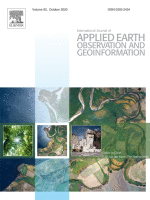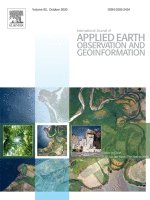Publications
Mapping leaf area index in a mixed temperate forest using Fenix airborne hyperspectral data and Gaussian processes regression
Machine learning algorithms, in particular, kernel-based machine learning methods such as Gaussian processes regression (GPR) have shown to be promising alternatives to traditional empirical methods for retrieving vegetation parameters from remotely sensed data. However, the performance of GPR in predicting forest biophysical parameters has hardly been examined using full-spectrum airborne hyperspectral data. The main objective of this study was to evaluate the potential of GPR to estimate forest leaf area index (LAI) using airborne hyperspectral data. To achieve this, field measurements of LAI were collected in the Bavarian Forest National Park (BFNP), Germany, concurrent with the acquisition of the Fenix airborne hyperspectral images (400−2500 nm) in July 2017. The performance of GPR was further compared with three commonly used empirical methods (i.e., narrowband vegetation indices (VIs), partial least square regression (PLSR), and artificial neural network (ANN)). The cross-validated coefficient of determination (Rcv2) and root mean square error (RMSEcv) between the retrieved and field-measured LAI were used to examine the accuracy of the respective methods. Our results showed that using the entire spectral data (400−2500 nm), GPR yielded the most accurate LAI estimation (Rcv2 = 0.67, RMSEcv = 0.53 m2 m−2) compared to the best performing narrowband VIs SAVI2 (Rcv2 = 0.54, RMSEcv = 0.63 m2 m−2), PLSR (Rcv2 = 0.74, RMSEcv = 0.73 m2 m−2) and ANN (Rcv2 = 0.68, RMSEcv = 0.54 m2 m−2). Consequently, when a spectral subset obtained from the analysis of VIs was used as model input, the predictive accuracies were generally improved (GPR RMSEcv = 0.52 m2 m−2; ANN RMSEcv = 0.55 m2 m−2; PLSR RMSEcv = 0.69 m2 m−2), indicating that extracting the most useful information from vast hyperspectral bands is crucial for improving model performance. In general, there was an agreement between measured and estimated LAI using different approaches (p > 0.05). The generated LAI map for BFNP using GPR and the spectral subset endorsed the LAI spatial distribution across the dominant forest classes (e.g., deciduous stands were generally associated with higher LAI values). The accompanying LAI uncertainty map generated by GPR shows that higher uncertainties were observed mainly in the regions with low LAI values (low vegetation cover) and forest areas which were not well represented in the collected sample plots. This study demonstrated the potential of GPR for estimating LAI in forest stands using airborne hyperspectral data. Owing to its capability to generate accurate predictions and associated uncertainty estimates, GPR is evaluated as a promising candidate for operational retrieval applications of vegetation traits
More: https://doi.org/10.1016/j.jag.2020.102242
International Journal of Applied Earth Observation and Geoinformation,
Volume 95, March 2021, 102242

Orginally published on Oct. 21, 2020, 12:34
Last update on Jan. 25, 2024, 09:01
